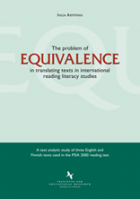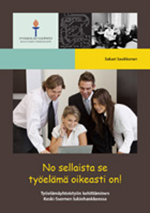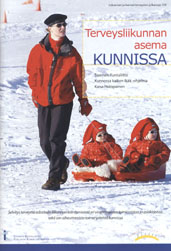The problem of equivalence in translating texts in international reading literacy studies
2,00 €
A text analytic study of three English and Finnish texts used in the PISA 2000 reading texts
Arffman, Inga
978-951-39-2907-7; 1455-447X
University of Jyväskylä. Institute for Educational Research / Koulutuksen tutkimuslaitos
Research reports / Tutkimuksia (21)
2007
Recent years have witnessed a considerable increase in the number of and interest in international reading literacy studies. Thanks to the widely cited PISA study, for instance, we have been told that Finnish students are the best readers in OECD countries. Such a result, however, would only be valid if all the texts and translations used in the reading test, written in all the different languages, were equivalent and hence equally easy or difficult to read.
This study examines the special problems of equivalence that arise when translating texts in international reading literacy studies, where equivalence of difficulty between all the different-language reading texts is a key prerequisite for the validity of the entire test. Knowledge of such problems, in turn, helps to increase the quality and the degree of equivalence of the translations used in these studies and, in the end, the validity, fairness and - equity of these studies.
The book will provide important reading for all those developing and conducting international reading literacy studies. It will also be of relevance to those involved or interested in other types of cross-cultural studies and in translation.
Abstract
"The Problem of Equivalence in Translating Texts in International Reading Literacy Studies. A text analytic study of three English and Finnish texts used in the PISA 2000 reading test”
The purpose of the study was to examine the special problems of equivalence that arise when translating texts in international reading literacy studies, where equivalence of difficulty between all the different-language reading texts is a key prerequisite for the validity of the entire test.
The data of the study consisted of three English source texts and their Finnish translations used in the PISA 2000 reading literacy study. The texts represented different text types: one was an expository text, one a narrative text and one a non-continuous text. The method for analysing the data was comparative linguistic text analysis: the English source texts and their Finnish translations were analysed and compared at different linguistic ranks and strata, with the objective of locating, analysing and assessing potential non-equivalences of difficulty in the texts. These, in turn, were determined on the basis of cognitive theories of reading. The analysis was mainly qualitative but also contained quantitative comparisons.
The analysis pointed to six main categories of problems leading to non-equivalences of difficulty between the English and Finnish texts: problems related to language-specific differences in grammar, problems having to do with language-specific differences in writing systems, problems associated with language-specific differences in meaning, problems concerning cultural differences, problems related to the strategies used and choices made by the translators, and problems linked with editing. The problems differed considerably between the text types, both in number and quality.
As a result of all the problems, none of the three Finnish translations was fully equivalent in difficulty to its English source text. However, most of the individual non-equivalences were small and largely evened out when examined collectively, leaving the true equivalences of difficulty between the English and Finnish texts relatively insignificant.
The results suggest that it will probably never be possible to attain full equivalence of difficulty between all the different-language texts in international reading literacy studies. However, the co
2 varastossa





